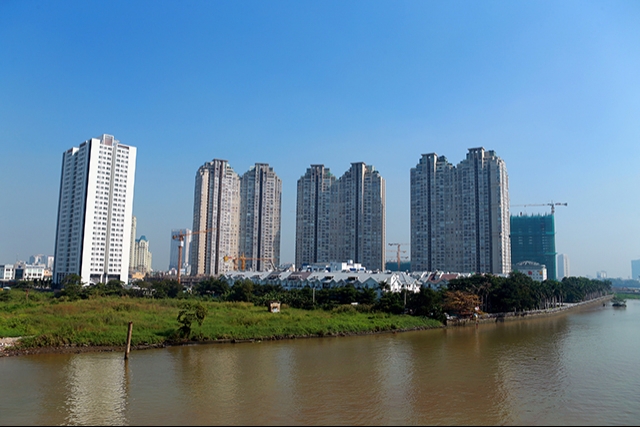Despite sluggish global growth, Vietnam’s economy is expected to continue to grow at a moderate pace and leave behind other large ASEAN nations in 2016, a recent report from the OECD states.

Vietnam and other ASEAN countries, however, risk falling into the “middle income trap”, OECD Deputy Secretary-General Doug Frantz told the OECD’s third Southeast Asia Regional Forum, held on June 14 in Hanoi to explore ways to achieve productivity growth and inclusiveness.
Real GDP growth in Vietnam is projected to remain solid at 6.3 per cent in 2016 and 6.1 per cent in 2017, according to the latest Economic Outlook for Southeast Asia, China and India 2016 released by the OECD on June 14.
The report shows that Vietnam’s growth is estimated to fall by 0.4 per cent compared to 2015 but still remain top of the ASEAN 5 (Indonesia, Malaysia, the Philippines, Thailand and Vietnam) and even higher than Singapore.
Vietnam’s growth may fall by 0.2 per cent in 2017, equal to the Philippines, but continue to lead the other five largest ASEAN economies.
Real economic activity in the ASEAN 10 is projected to grow at an average of 4.9 per cent in 2016 and 5.3 per cent in 2017.
India’s economy is expected to grow at 7.4 per cent while China’s is projected at 6.5 per cent in 2016 as a result of the country’s ongoing process of rebalancing.
Domestic demand is generally the main driver of economic growth in this region, according to OECD report.
The less favorable external environment is a potential risk to countries in Southeast Asia as well as to China and India.
The region is facing challenges due to weak growth prospects from OECD economies, China’s slowdown, and recent financial volatility in emerging markets.
Climate change, including the effects of drought due to the El Nino weather pattern, has had severe impacts on agricultural production in the region.
The report underlines that 2016 is an important milestone for regional integration following the establishment of the ASEAN Economic Community (AEC) in December last year.
Mr. Frantz told the forum that despite maintaining optimistic economic growth after the 2008-2009 financial crisis, ASEAN countries are now facing challenges that include slowing productivity, increasing social inequality, and the risk of falling into the “middle income trap”.
“ASEAN countries should increase investment in education and training, improve skills of workers, enhance the business environment, support small and medium-sized enterprises (SMEs) to integrate into global value chains, and ensure social welfare in order to tackle these issues,” he said.
Deputy Minister of Foreign Affairs Bui Thanh Son said that improving productivity and inclusiveness are pressing needs for ASEAN countries during the process of building the ASEAN Community.
“Vietnam always does its best to promote integration and narrow the development gap within ASEAN,” he told the forum.
ASEAN countries, he went on, should focus on creating more jobs with high productivity and good institutions, infrastructure and human resources to take advantage of the opportunities stemming from regional economic integration, and undertake efforts to narrow gaps in development and education.
Japan’s Deputy Minister of Foreign Affairs Masakzu Hamachi affirmed that Japan commits to supporting ASEAN to improve productivity growth and inclusiveness.
It will continue to cooperate with the OECD to deploy the Southeast Asia Regional Program (SEARP) in the future, he added.
VN Economic Times